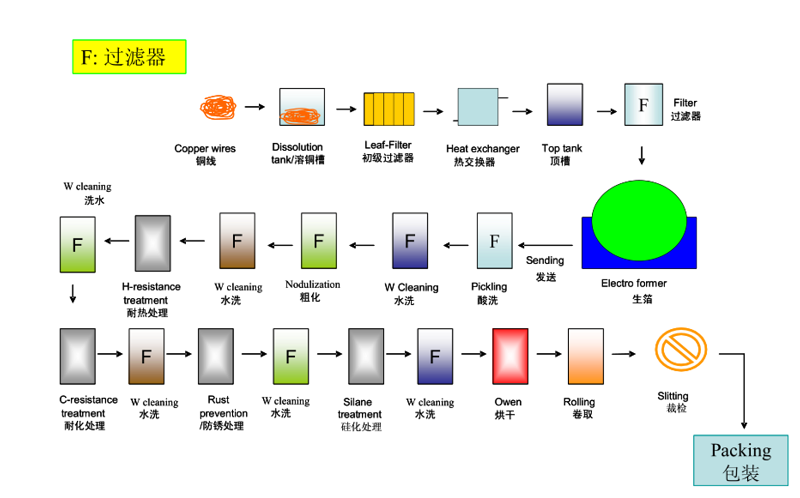Copper foil production process
The process of producing copper foil mainly includes electrolytic copper foil and rolled copper foil.
Electrolytic copper foil is an important material for the manufacture of copper clad laminate (CCL) and printed circuit board (PCB). In today's rapid development of the electronic information industry, electrolytic copper foil is called the "neural network" of electronic product signal and power transmission and communication. There are three main processes in the production process: solution-forming foil, surface treatment and product slitting. Since the production of electrolytic copper foil has very strict requirements on the cleanliness of its electrolytic solution (copper sulfate solution), many filtration systems and liquid pumps have been repeatedly used in the previous production process. It can fundamentally control product quality and reduce production costs.
Solution
A large number of filters are used in the production process to remove impurities in the fluid.
1. The raw foil process is one of the most critical links in the production of copper foil. The copper sulfate solution is required to be pure, free of impurities, and uniform and stable in composition. Adsorption of particulate impurities on the surface of the copper foil will cause quality defects such as rough surface, penetration points and pinholes. Therefore, the solution must be purified through a high-precision filter.
2. The electrolysis process is very sensitive to organic impurities. Organic impurities in the copper foil electrolysis process mainly include colloids, grease and equipment lubricants in the solution. A small drop of lubricant may cause 8-12 hours of waste in the electrolysis system. Therefore, filters must be used to remove oil and impurities to ensure production efficiency and quality.
3. During the calendering process, the filtering accuracy of the rolling oil and the workshop environment may be the cause of the pinholes in the copper foil. Lubricating oil and particles in the air may be pressed to the foil surface during the calendering process to produce pinholes, resulting in the foil The surface is rough, thereby reducing the quality and aesthetics of the copper foil products, and the external environment and rolling oil filtration accuracy have higher requirements. The rolling oil filter system of the copper foil rolling mill requires a filtration accuracy of <2um. The cleanliness of the working environment for copper foil rolling is relatively high, and the cleanliness should be above 100,000. The cleanliness requirements of the entire foil-making workshop are also very high. Therefore, dust removal equipment and dust collection equipment are required.


